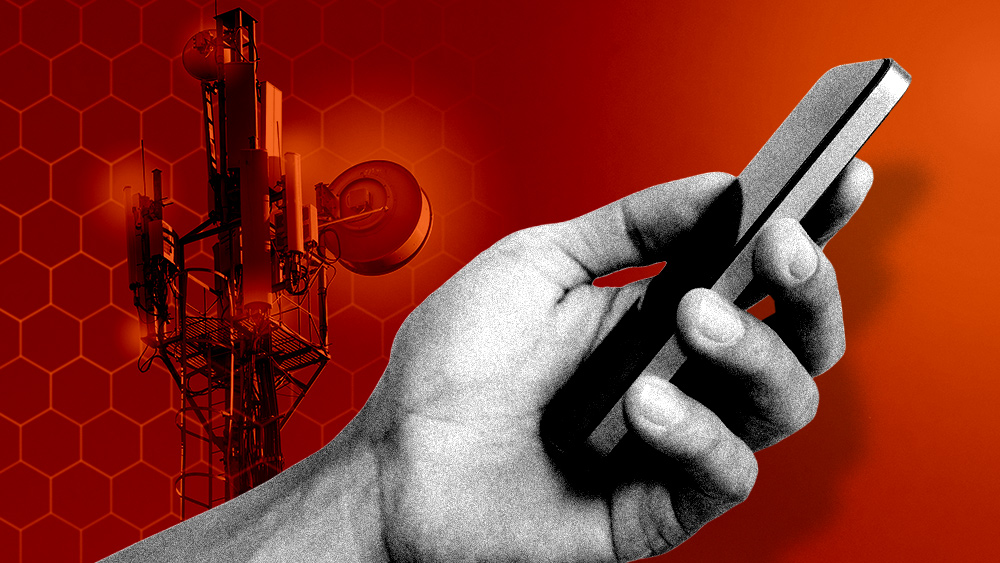Independent scientists are raising the alarm: Humanity is becoming more electrosensitive
01/24/2019 / By Isabelle Z.

Connected devices are everywhere you look these days. Cell phone obsession used to be mostly limited to businesspeople, but it’s now commonplace to see elderly people playing games on their phone in a waiting room and kids glued to a tablet at a restaurant. It’s hard not to wonder what effect all this wireless technology could be having on our health, and while there is still a lot we don’t know, some experts are sounding alarm bells.
Of course, if you ask phone makers and service providers, they’ll take a very different view. Even the general scientific “consensus” is somehow that non-ionizing radiation doesn’t cause health effects. However, lots of independent scientists and physicians are trying to get the word out that all this may not be as harmless as they want you to believe.
As far back as 2006, a pair of Swedish and Austrian researchers wrote in the Electromagnetic Biology and Medicine journal that more people are suffering from electrosensitivity each year. In addition, they say that other illnesses have symptoms similar to those seen in electrosensitive people, such as burn-out syndrome and fibromyalgia, raising the possibility that there could be more cases than we realize.
They warned that those exhibiting electrosensitivity make up more than just a small fraction of the population, predicting at the time that at least half of our population would become electrosensitive by 2017. That year has come and passed; how much damage has already been done?
What are all these electronics doing to people?
Some experts try to dismiss people’s complaints, saying that it’s “all in their heads.” However, EMFs have been associated with problems like ADHD, asthma, immune system disorders, infertility, brain cancer and neurological diseases, so it’s time for this to be taken seriously.
One French researcher has found reliable biomarkers among people who have electro hypersensitivity. These include high levels of blood histamine, elevated NTT (an oxidative stress marker), and elevated levels of S100B (a marker of blood-brain barrier leakage).
Electro pollution expert Dr. Magda Havas estimates that three percent of the population has severe symptoms and a further 35 percent have mild to moderate symptoms when they are exposed to “electrosmog.” She says these people might be able to function in the presence of electrosmog but have symptoms like trouble sleeping, headaches, fatigue, discomfort, movement difficulty, nausea, hearing problems, skin problems and memory loss.
Physician Dr. Zach Bush said he didn’t believe in the phenomenon at all when the first few patients started to complain about it, but now he sees it so frequently that he can no longer ignore it. In some patients, it’s so severe that it limits their daily activities. One woman has said she has to avoid places like airports, restaurants and movie theaters to get away from Wi-Fi, and the pain can feel like someone is tasering her inside the mouth.
For many people, the problem is only about to get worse with the rollout of 5G wireless technology, which is far stronger than the 3G and 4G currently in use. One study carried out by the National Toxicology Program showed that 2G cell phone radiation can cause DNA damage and brain cancer in rats; it’s hard to imagine what kind of damage 5G is capable of causing. How long will it be before we all have to keep our distance from Wi-Fi and other electronic pollution, and will there be anywhere left to go to get away from it?
Sources for this article include:
Tagged Under: 5g, dangerous tech, disease causes, electrosensitivity, EMF, Glitch, mental health, mind body science, radiation, research, Wi-Fi
RECENT NEWS & ARTICLES
COPYRIGHT © 2017 GLITCH.NEWS
All content posted on this site is protected under Free Speech. Glitch.news is not responsible for content written by contributing authors. The information on this site is provided for educational and entertainment purposes only. It is not intended as a substitute for professional advice of any kind. Glitch.news assumes no responsibility for the use or misuse of this material. All trademarks, registered trademarks and service marks mentioned on this site are the property of their respective owners.




















